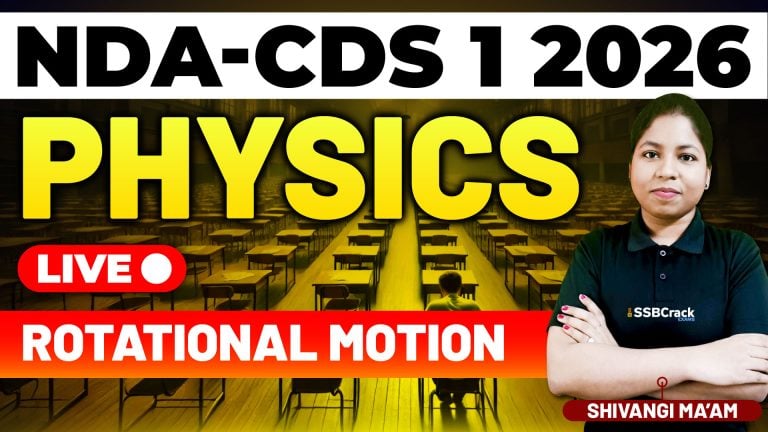As the NDA (National Defence Academy) and CDS (Combined Defence Services) 1 2025 exams draw nearer, aspirants are preparing to tackle one of the most challenging and competitive entrance exams in the country. Among the numerous topics in the Chemistry syllabus, Atomic Structure is foundational and critically important for candidates aiming for success in these prestigious exams. Understanding this topic not only builds a strong foundation in Chemistry but also opens the door to mastering more advanced concepts, which are crucial for both the written test and personal interviews.
Here, we explore why focusing on Atomic Structure is essential for NDA & CDS 1 2025 aspirants, and how it impacts their overall preparation.
Why Atomic Structure is Crucial
- Foundation of Chemistry:
- The study of atomic structure is the cornerstone of Chemistry. At its heart, it explains the composition, behavior, and interaction of matter at the most fundamental level. All chemical reactions, bonding, and properties of elements stem from the structure and behavior of atoms.
- Understanding the configuration of electrons, protons, and neutrons within an atom provides insight into how elements will react with one another, form compounds, and exhibit specific properties.
- Connection to Other Topics:
- Mastering atomic structure helps aspirants grasp more advanced topics in Chemistry such as chemical bonding, periodic properties, quantum mechanics, and molecular structure. These topics are integral to the NDA and CDS syllabus, making a clear understanding of atomic structure essential for progressing smoothly through these interconnected areas.
- For instance, knowing how electrons are arranged in orbitals allows students to predict the nature of bonds (ionic, covalent, or metallic) between atoms. This knowledge is indispensable for solving questions on chemical bonding and molecular geometry.
- Relevance to the NDA & CDS Exams:
- The NDA and CDS Chemistry sections frequently include direct questions on atomic models, electron configuration, and quantum numbers. These questions test a candidate’s understanding of the fundamental principles that govern atomic behavior.
- Exam questions can cover historical models of the atom (e.g., Rutherford’s, Bohr’s models), modern quantum mechanical theories, and the significance of atomic spectra. Therefore, a thorough understanding of these concepts can help aspirants solve questions quickly and accurately.
- Building Analytical Skills:
- Atomic structure isn’t just about memorization; it encourages aspirants to think analytically. Understanding how energy levels, subshells, and electron transitions work trains candidates to approach Chemistry problems with logic and reasoning. This analytical skill is not only crucial for Chemistry but also for the Physics and Mathematics sections of the exams.
- The complex nature of quantum numbers (principal, azimuthal, magnetic, and spin) helps develop problem-solving abilities, as aspirants learn to apply these principles to various scenarios.
- Conceptual and Numerical Questions:
- Questions related to atomic structure in the NDA and CDS exams are typically a mix of theoretical and numerical problems. Aspirants may encounter questions requiring them to calculate energy levels, electron configurations, or interpret spectral lines, which demand both conceptual clarity and quick numerical abilities.
- By mastering this topic, aspirants can tackle a variety of questions, from straightforward multiple-choice queries to more complex calculations involving atomic and molecular structure.
- Real-World Applications:
- The principles of atomic structure have far-reaching applications beyond the confines of Chemistry textbooks. In defence technology, understanding the structure of atoms is key to areas like nuclear chemistry and energy. Atomic theory plays a pivotal role in the development of modern weapons, energy production, and materials science, all of which are critical to a career in the defence forces.
- For aspirants aspiring to serve in technical branches of the armed forces, such as engineering or logistics, a firm grasp of atomic theory and its applications will be an asset in their future careers.
Key Topics Under Atomic Structure to Focus On
For the upcoming NDA & CDS 1 2025 exams, aspirants should focus on the following key subtopics within Atomic Structure:
- Early Models of the Atom:
- Dalton’s atomic theory, Thomson’s plum pudding model, Rutherford’s gold foil experiment, and Bohr’s model of the hydrogen atom.
- Quantum Mechanical Model:
- Understanding Schrödinger’s equation and the wave-particle duality of electrons. The concept of atomic orbitals and their shapes (s, p, d, f) are frequently tested.
- Quantum Numbers:
- Principal (n), azimuthal (l), magnetic (m), and spin (s) quantum numbers, their significance, and how they define the state of an electron in an atom.
- Electron Configuration:
- Aufbau principle, Pauli’s exclusion principle, and Hund’s rule, which explain how electrons are arranged in different orbitals. This is a common area for multiple-choice questions.
- Electromagnetic Radiation and Atomic Spectra:
- The concept of emission and absorption spectra, the photoelectric effect, and how atoms emit and absorb light based on electron transitions between energy levels.
- Periodic Properties:
- While technically covered in the periodic table chapter, understanding the atomic structure helps in comprehending trends in atomic size, ionization energy, electron affinity, and electronegativity, which are crucial for problem-solving in the exam.
Conclusion
Atomic structure is not just a topic—it’s the gateway to mastering the fundamentals of Chemistry. For NDA and CDS 1 2025 aspirants, a strong grasp of atomic structure will not only boost their performance in the Chemistry section but also enhance their overall problem-solving skills, logical reasoning, and analytical thinking.
By mastering this topic early in their preparation, aspirants can build a solid foundation that will serve them well in tackling the more advanced and complex areas of the syllabus. With a focused and strategic approach to studying atomic structure, candidates can position themselves for success in the NDA and CDS 1 2025 exams, paving the way for a bright future in the armed forces.



















